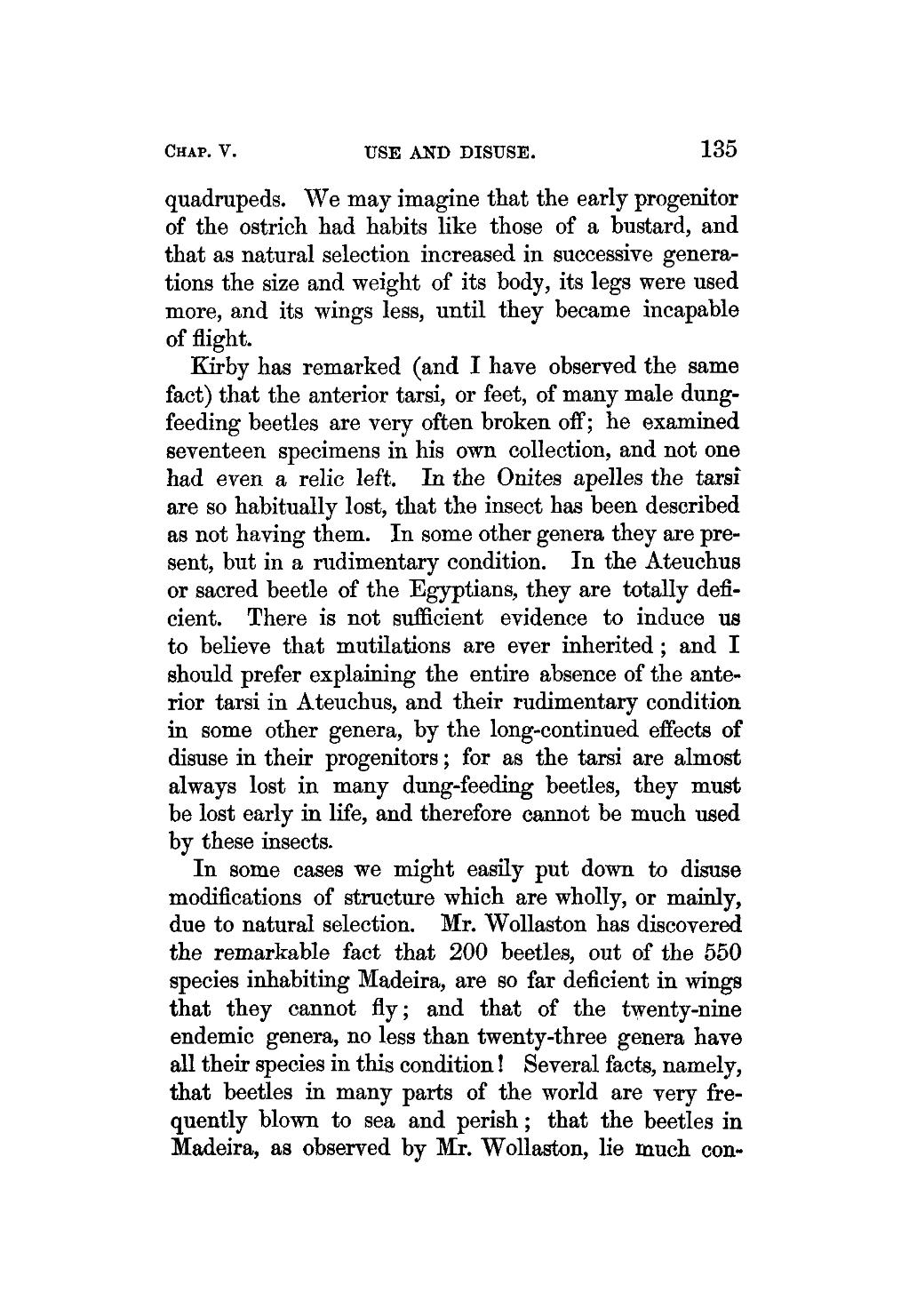quadrupeds. We may imagine that the early progenitor of the ostrich had habits like those of a bustard, and that as natural selection increased in successive generations the size and weight of its body, its legs were used more, and its wings less, until they became incapable of flight.
Kirby has remarked (and I have observed the same fact) that the anterior tarsi, or feet, of many male dung-feeding beetles are very often broken off; he examined seventeen specimens in his own collection, and not one had even a relic left. In the Onites apelles the tarsi are so habitually lost, that the insect has been described as not having them. In some other genera they are present, but in a rudimentary condition. In the Ateuchus or sacred beetle of the Egyptians, they are totally deficient. There is not sufficient evidence to induce us to believe that mutilations are ever inherited; and I should prefer explaining the entire absence of the anterior tarsi in Ateuchus, and their rudimentary condition in some other genera, by the long-continued effects of disuse in their progenitors; for as the tarsi are almost always lost in many dung-feeding beetles, they must be lost early in life, and therefore cannot be much used by these insects.
In some cases we might easily put down to disuse modifications of structure which are wholly, or mainly, due to natural selection. Mr. Wollaston has discovered the remarkable fact that 200 beetles, out of the 550 species inhabiting Madeira, are so far deficient in wings that they cannot fly; and that of the twenty-nine endemic genera, no less than twenty-three genera have all their species in this condition! Several facts, namely, that beetles in many parts of the world are very frequently blown to sea and perish; that the beetles in Madeira, as observed by Mr. Wollaston, lie much con-

